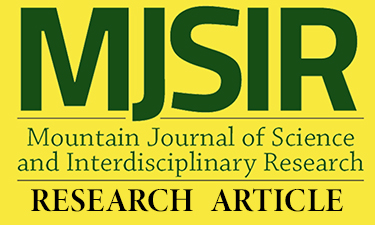Effective Density of Lure Trap Against Coffee Berry Borer Infesting Arabica Coffee (Coffea arabica Linn.) in Benguet, Philippines
Main Article Content
Abstract
One major insect pest of Arabica coffee is coffee berry borer (CBB) which was recorded present in Benguet Arabica coffee farms. Previous study revealed that 28 to 47% of these farms were infested with CBB in 2011 to 2014. The management of CBB using lure trap was found effective in other coffee producing countries but yet to be proven locally. This study evaluated the use of lure trap in Arabica coffee farms in Atok and La Trinidad, Benguet in 2018. This study aimed to determine the appropriate number of lure traps per 50 coffee trees. Specifically, to determine the duration of methanol and ethanol lure solution in the traps, population of coffee berry borer trapped, and the effect of lure traps on the percent infestation of coffee berries. Results showed that the duration of the methanol: ethanol lure solution differed in the two locations with the lure solution lasting longer in La Trinidad. The use of 4 lure traps per 50 trees recorded the highest population of adult female CBB trapped in both locations. Meanwhile, the percent infestation was lowest with the use of 4 lure traps per 50 trees in Atok. Therefore, it is recommended to use 4 lure traps per 50 coffee trees to Arabica coffee production areas similar to Atok, Benguet conditions against CBB. Results of the study could serve as basis for further research on the use of methanol: ethanol lure trap in managing CBB in different Arabica coffee production areas.
Article Details
References
Catajan, M.E. (2016). Industry Revival Eyed in 2nd Coffee Congress. Sunstar. https://www.pressreader.com/philippines/sunstar-baguio/20161117/281560880378 699
Chapman, R.F. (1991). The Insects of Australia. A Textbook for Students and Research Workers. Melbourne University Press. 2nd edition (Vol. 1 & 2). Pp. 320,369,429, 717, 787, 916.
Copero, F.S. (2014). Trapping of adult coffee berry borer (Hypothenemus hampie Ferrari) infesting Arabica Coffee (Coffea arabica Linnaeus) using chemical lure. Unpublished Thesis. Benguet State University. Pp.1, 5-7.
College of Tropical Agriculture and Human Resources. (2007). Coffee berry borer (Hypothenemus hampie). http://www.ctahr.hawaii.edu/site/cbb/aspx.
Dufour, B.P., & Frérot, B. (2008). Optimization of coffee berry borer, Hypothenemus hampei Ferrari (Col., Scolytidae), mass trapping with an attractant mixture. Journal of Applied Entomology, 132: 591–600. https://doi.org/10.1111/j.14390418.2008.01291.x
Das-ilen, G.S. (2018). Population Dynamics and Age Structure of Coffee Berry Borer (Hypothenemus hampei Ferrari) in Arabica coffee Grown under Partial Shade in Benguet, Philippines. (Unpublished Dissertation). University of the Philippines- Los Banos.
Department of Agriculture-Cordillera Administrative Region. (2017). Coffee as champion crop. http://car.da.gov.ph/index.php/news-and-events/35coffee-as-champion-crop-commodity-in-car
Evasco, N.H.G. (2016). Evaluation on the Density of Lure Traps in the Population of Coffee Berry Borer (Hypothenemus hampie Ferrari) Associated with Arabica Coffee (Coffea arabica Linnaeus). (Unpublished Thesis. Benguet State University.
Ferst, R.A. (2009). Production Guide for Arabica Coffee. http://www.botecentral.net/productionguide-for-Arabica-coffee-by-botecentral-incmaker-of-coffee-alamid/.
Gandia, I.M., & Boncato, A.A. 1964. A note on the occurrence of the coffee borer in the Philippines. Coffee and Cacao Journal (Philippines), 7(6):124.
Kral, K. (2016). Implications of insect responses to supernormal visual releasing stimuli in intersexual communication and flower-visiting behaviour: a review. Eur J Entomol, 113:429. https://doi.org/10.14411/eje. 2016. 056
Ligat B.S., & Basalong, A.A. (2014). RD Program on Organic Coffee Production in Benguet. Annual Report.
Pèrez, J.A., & Vega, F.E. (2014). The Coffee Berry Borer: The Centenary of a Biology Invasion in Brazil infant. http://www.scielo.br/pdf/bjb/v74n3s1/1519-6984-bjb-74-03s1-s125.pdf.
Sabio, G., Dator, J., Austria, M., & Mesa, V. (2012). Laboratory Studies on the Application of Hermetic Storage for Preserving Arabica Coffee. http://ftic.co.il/2012AntalyaPDF/SESSION%2005%20PAPER%2013.pdf

